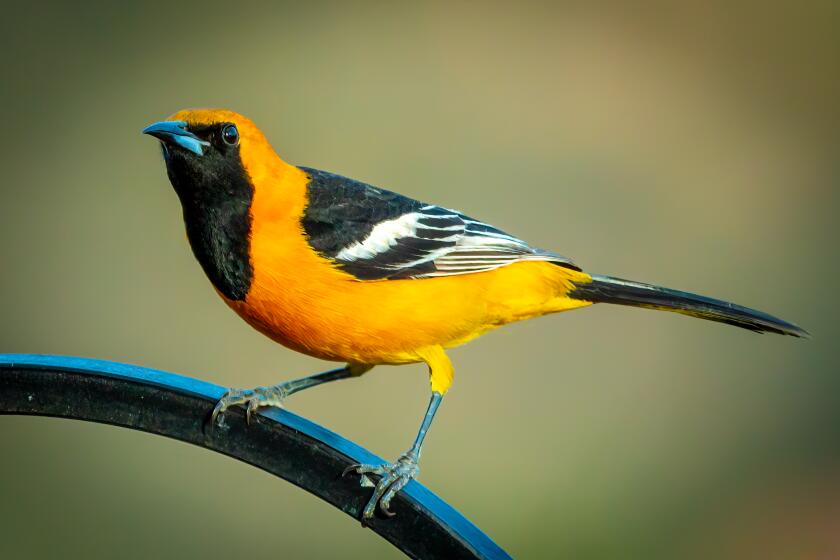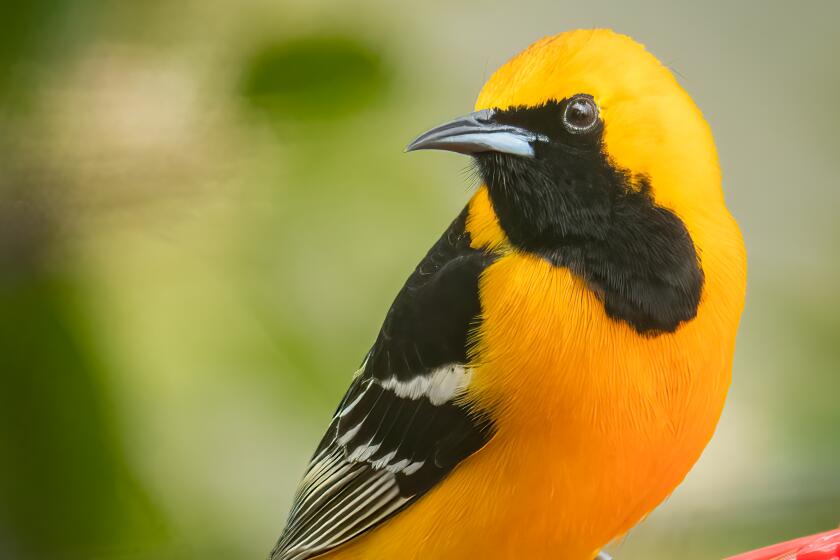Outdoors: Praying mantis a beneficial creature to have in backyard
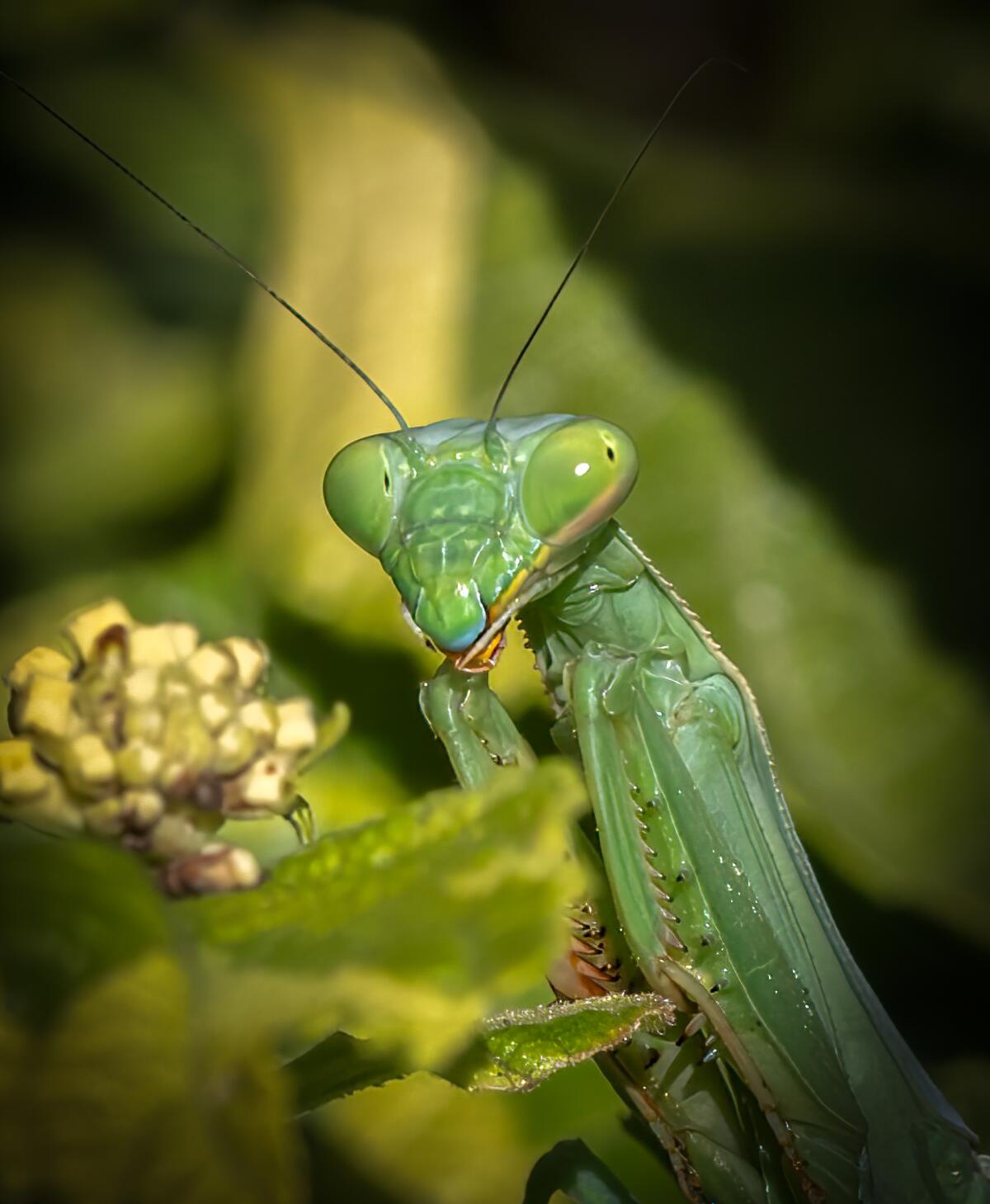
Not only is this garden visitor that is able to blend in with its surroundings a natural eradicator of pests, it also offers lessons in Zen
It was truly a Zen moment as I basked in the first warm sunshine that we’ve had after the recent spell of chilly, foggy fall mornings.
Yes, it’s easy to be spoiled by our typically mild weather.
I was lost in the melodic sound of the bubbling fountain, the tender fragrance of the last summer flowers drifting through the garden and the gentle rhythm of orange skipper butterflies and honeybees kissing the bright yellow blossoms of the lantana.
Hummingbirds and lesser goldfinch came to gossip and drink in the rippling water of the fountain, and in the distance a raucous scrub jay couldn’t be distracted by the tranquility as he went about noisily gathering nuts from a nearby feeder.
It was an idyllic moment of calm and serenity.
Absorbed by the industry of nature, I felt like a small piece of driftwood being carried in the meandering flow of an autumn creek after the angry gushes of spring have slowed to a trickle.
Then I noticed the eyes.
Or, more accurately, the eyes noticed me.
A bright green head and two little black eyes of a praying mantis were watching me from the sanctuary of the nearby lantana.
With slow and deliberate movement, much like that of a sloth, the head was turning as my insect friend analyzed this human intruder.
“Ah ha,” I thought, as I noticed some tattered leaves and suspected I had found the culprit who was chewing holes in my shrubs.
But he was a handsome critter, and I decided to find out more about this garden visitor.
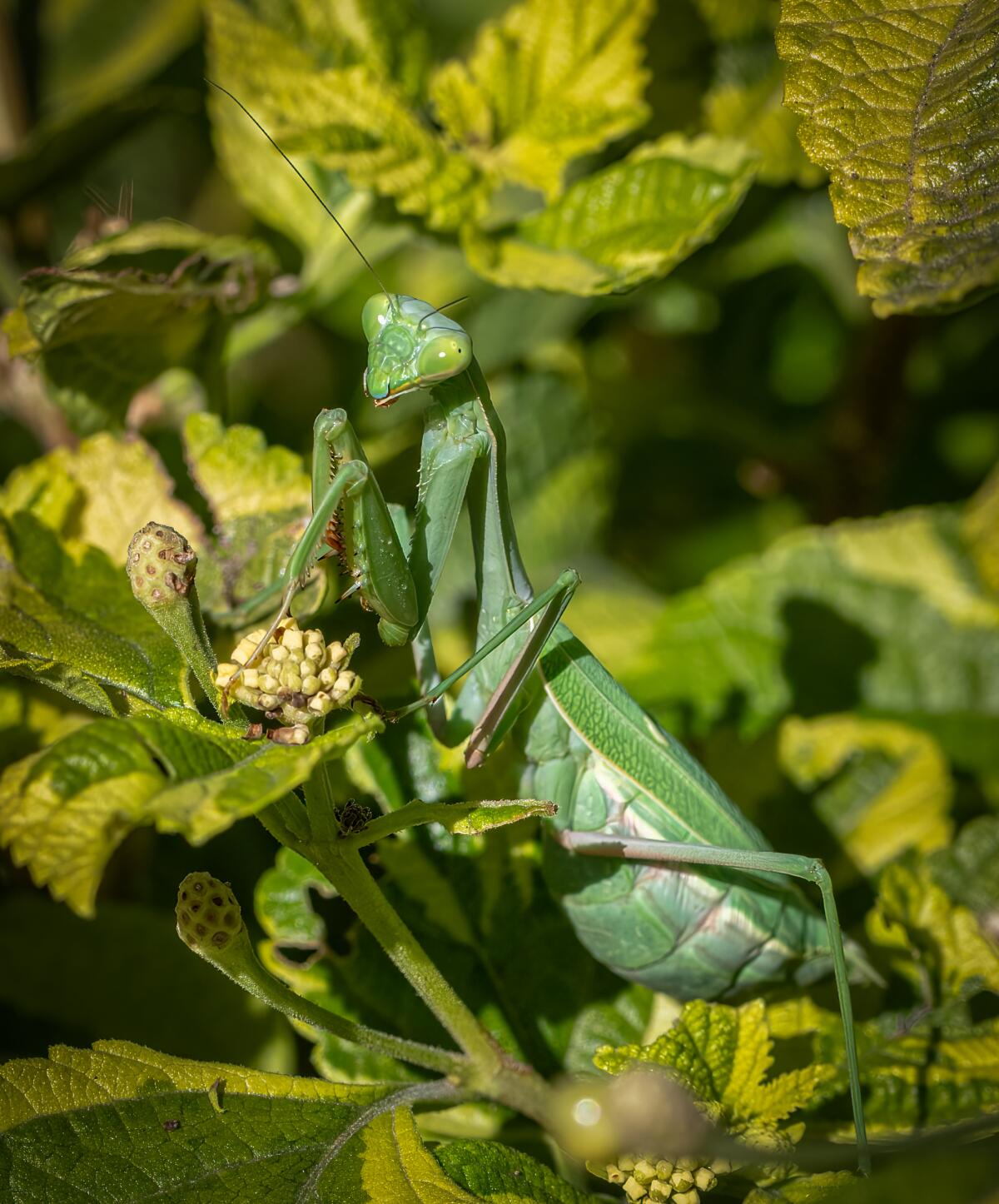
I discovered that the praying mantis is actually a very beneficial creature to have in your backyard garden, and not a villain at all.
The praying mantis is nature’s version of Corky’s Pest Control.
They don’t eat plants. In fact, they feed entirely on garden pests such as insects, spiders, crickets, beetles and aphids, but also small animals such a lizards, rodents and tiny birds.
In many parts of the world the praying mantis is encouraged because of their appetite for insect pests that damage crops.
There are nearly 2,000 different mantis species worldwide, found mostly in the more tropical or temperate climates.
While they can move surprisingly fast when capturing prey, typically they will remain motionless for hours waiting for an unsuspecting insect to come within range.
At that moment, their long, spiked front legs will thrust out, securing their meal.
Their large eyes, combined with the ability to turn their heads 180 degrees allows the praying mantis to be aware of what’s going on around them.
Scientists have discovered the mantis also has unique 3D eyesight that is now being studied for its potential use to improve vision in robots.
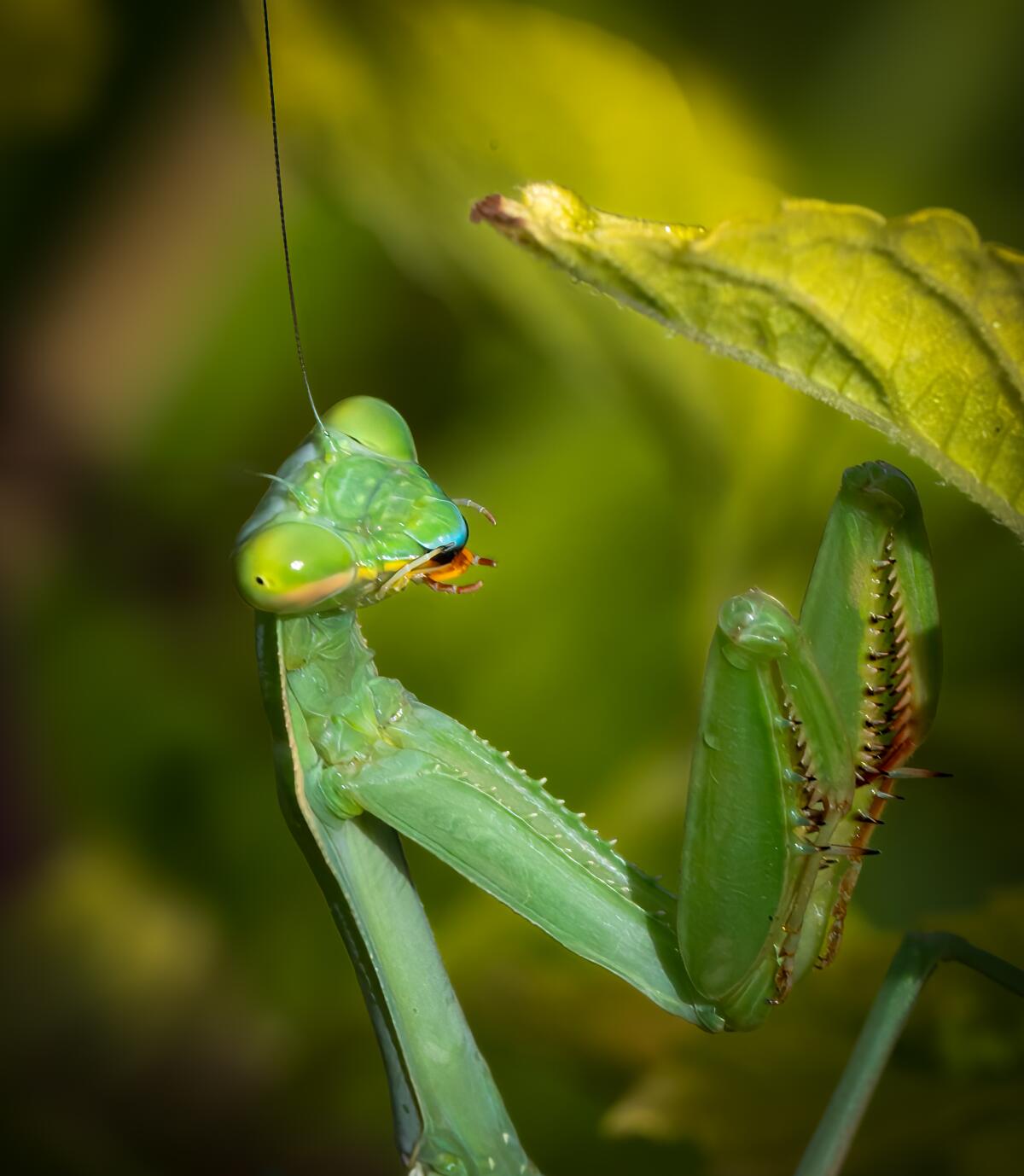
You likely have mantises in your garden but may not have seen them because of their ability to change color and blend with their surroundings. They can look like a twig or a leaf, and their lack of motion can make them difficult to see.
Checking on my new friend several times proved to be challenging. He was still in the lantana, but it often took me several minutes to find him.
Despite its nature as an aggressive hunter, this garden visitor is harmless to humans, and has become a popular pet, requiring only a screened cage or aquarium enclosure with good ventilation, plants or twigs where it can perch, and a regular offering of crickets, flies or small grasshoppers for food.
The praying mantis does not drink from a water source but will take moisture from the drops of water sprayed on plants.
Mantises can fly when agitated, so make sure you don’t handle them outside where they might escape.
Fall is an important time for the praying mantis. Soon they will begin a new life cycle by depositing egg clusters enclosed in paper-like cases known as ootheca. These are attached to the branches of plants where the eggs will remain until spring when several hundred nymphs will emerge and begin feeding.
By summer, the nymphs, which look like small, wingless adults, will molt several times, transforming into mature adults, growing to about 4 inches in length.
Be careful when doing fall pruning of your plants and try to avoid destroying the egg capsules.
I should go now. My wife is working on a to-do list.
I told her it must wait because I have an appointment with a praying mantis, my new Zen master.
Cowan is a freelance columnist. Email ernie@packtrain.com or visit erniesoutdoors.blogspot.com.
Get the Pomerado News in your inbox weekly
Top headlines from Poway, Rancho Bernardo and 4S Ranch, every Thursday for free.
You may occasionally receive promotional content from the Pomerado News.


